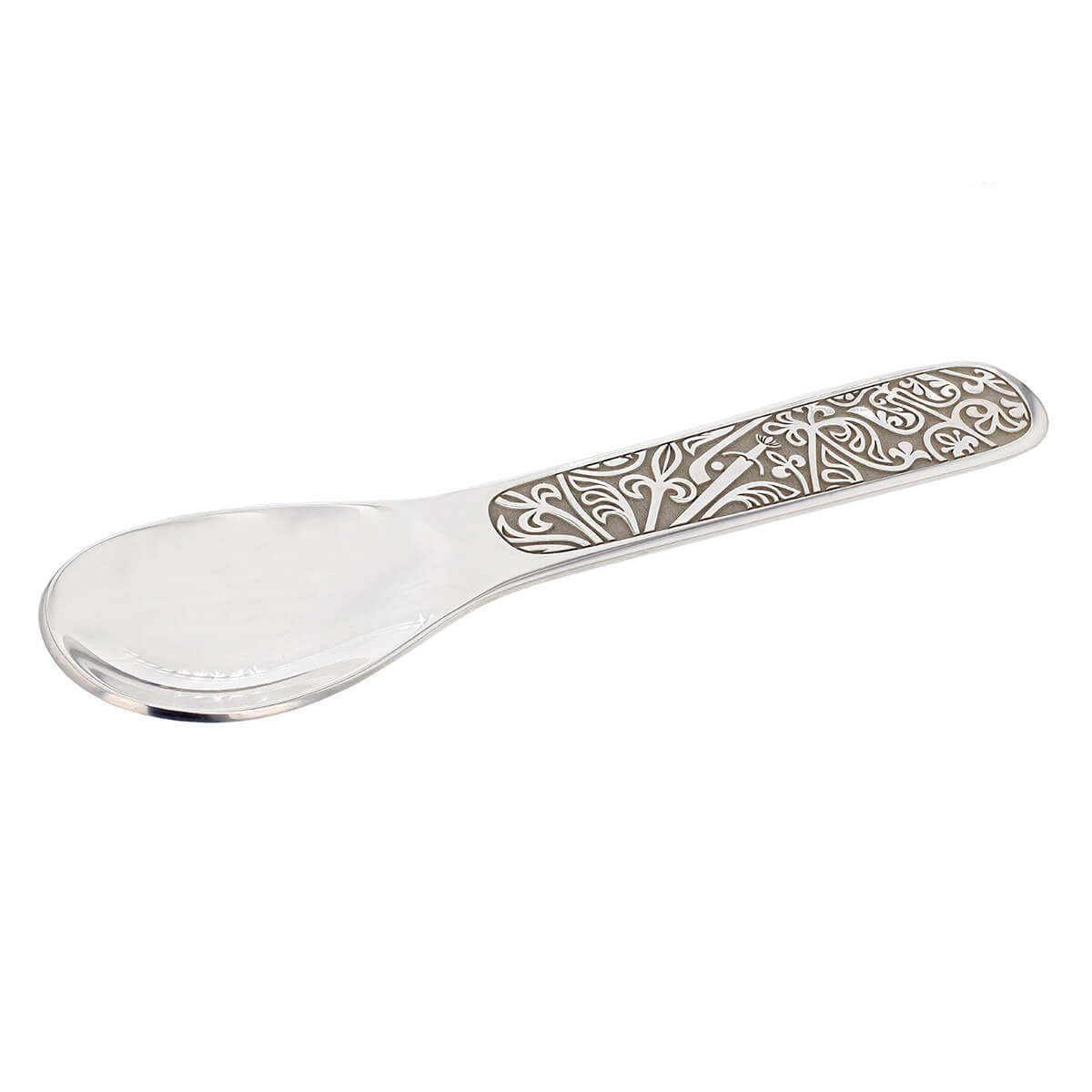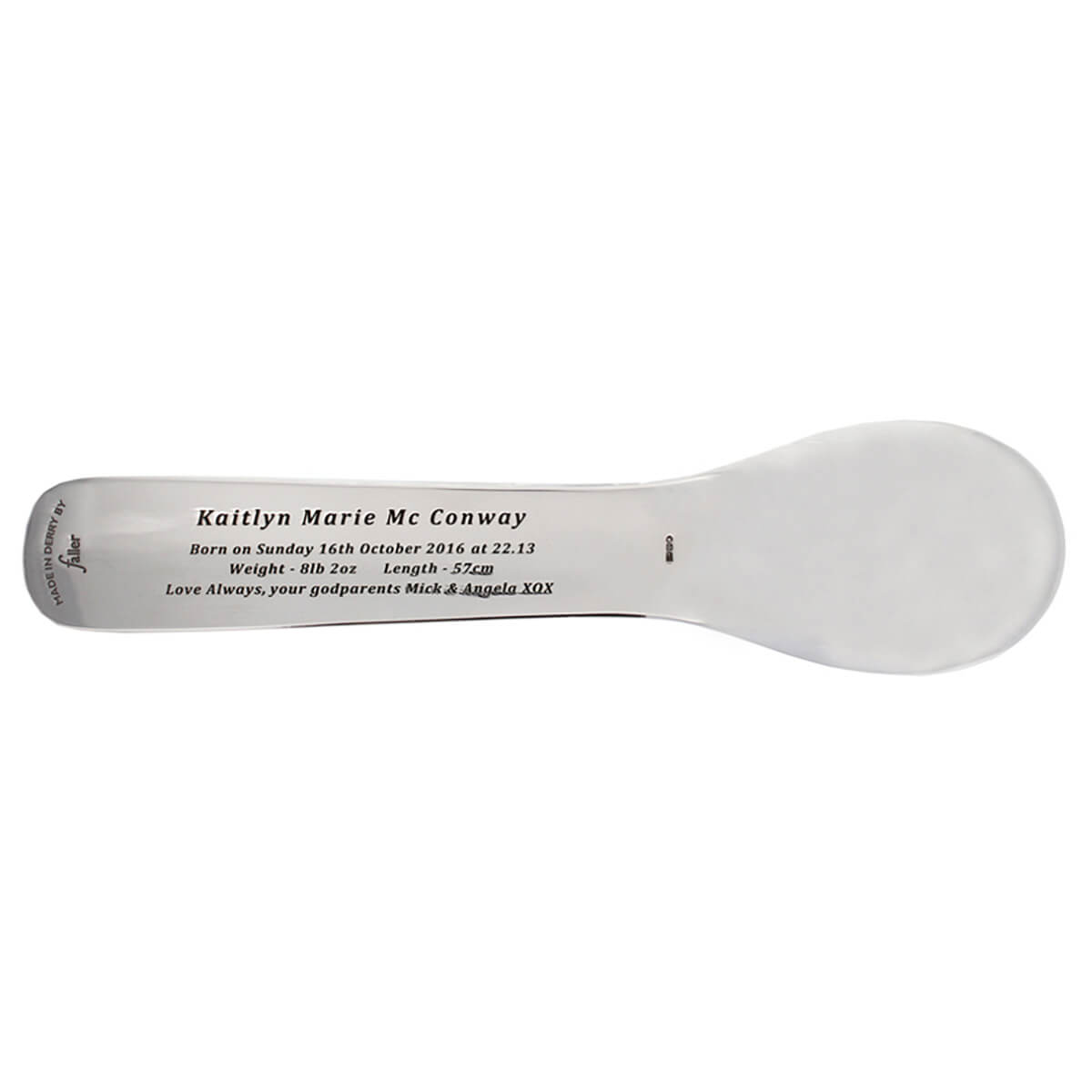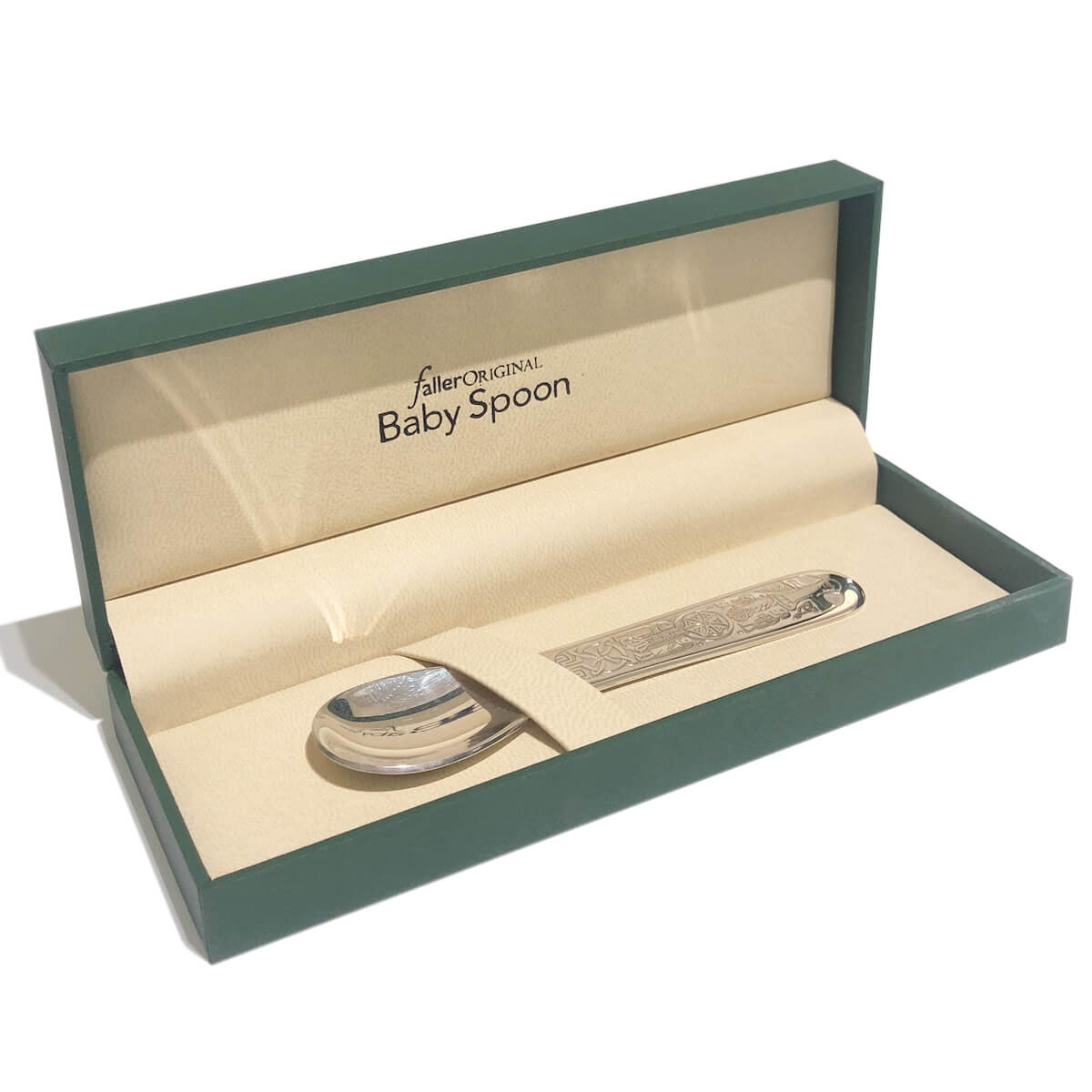Galloglas Baby Spoon
Metal: sterling silver
Size: 120mm long by 30mm wide
With up to 4 lines of personalisation on the reverse. One example is pictured here.
Once personalised this item cannot be returned. Please check details before ordering.
£135
-
Description
The design of this solid sterling silver christening spoon is derived from the Galloglas stone found in Inishowen, Co. Donegal. A medieval memorial stone which features a primitive version of the hurley (camán) and a sword (Scottish Claymore) commemorating the prowess of a Galloglas warrior in two fields of battle. May the strength and bravery symbolised here be reflected in the child. This baptismal spoon is the perfect memento for keeping a record of those important baby details, an ideal gift to be treasured by both parent and child. Complete with our Faller branded Baby Spoon box.
The design of this solid sterling silver christening spoon is derived from the Galloglas stone found in Inishowen, Co. Donegal. A medieval memorial stone which features a primitive version of the hurley (camán) and a sword (Scottish Claymore) commemorating the prowess of a Galloglas warrior in two fields of battle. May the strength and bravery symbolised here be reflected in the child. This baptismal spoon is the perfect memento for keeping a record of those important baby details, an ideal gift to be treasured by both parent and child. Complete with our Faller branded Baby Spoon box.
About The Galloglas Stone
This early medieval gravestone is located in the church ruin at Clonca, close to the Bodan Cross, 3km south of Culdaff, in Inishowen, Co. Donegal. Carved from dark limestone it measures 185cm tall by 55cm wide and 14cm deep.
The Scots Gaelic inscription in Lombardic lettering reads…. “Magnus mac Orristin ia fo triat seo” (Magnus Mac Orristin of the Isles under this mound). “Fergus mac Allan do rini in clach sa” (Fergus Mac Allan made this stone).
The curved stick (known as a camán) on the slab reminds us that primitive versions of hurley were played in Ireland in ancient times. Modern hurley, shinty (Scottish) and hockey have all evolved from this primitive game. A cast of this unique monument is on display in the GAA Museum, Croke Park, Dublin.
The two-handed Scottish Claymore was commonly used by Gallóglaich, (Galloglas or Gallowglass). They were an elite class of mercenaries from the mixed Scottish-Viking population of the Hebrides and parts of western Scotland. From the mid 12th century onwards they were recruited by Irish chiefs to counteract the heavily armoured and mounted knights of the English invaders. Similar in language and customs, the Galloglas integrated easily with the locals and many settled in Ireland. In time their ranks became filled with native Irish men. Noted for their courage and fierceness in battle they enabled the Gaelic culture to withstand the English incursion until the end of the 16th century when the introduction of muskets and cannon finally defeated them.
Irish Galloglas clans included Mac Sweeney clan (MacSuibhnes) originally from Argyll, Mac Cába (McCabe) from Aran, MacDomhnaill (MacDonald / McDonnell) from Kintyre and Islay, Mac Dubhghaill (Macdougall / McDowell from Lorne, Mac Ruairí (MacRory) from Bute, Mac Síthigh (MacSheehy / Sheehy) from Kintyre, and Mac Aodha (McCoy) from Kintyre.
For more local information on this monument go to Sean Beattie’s Article.





